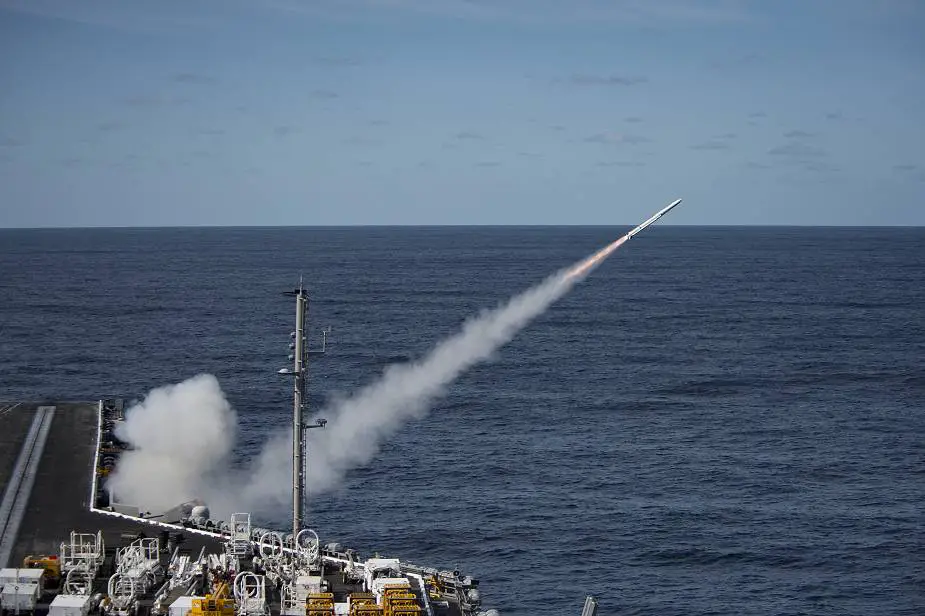Breaking news
Raytheon to complete engineering development of ESSM Evolved Sea Sparrow Missile Block II.
According to a contract released by the U.S. DoD (Department of Defense) on July 1, 2020, Raytheon Missiles and Defense, Tucson, Arizona, is awarded a $32,192,842 firm-fixed-price contract modification to previously awarded contract N00024-15-C-5420 to complete engineering and manufacturing development software development, testing and support to complete the government operational test and evaluation of the Block II Evolved Sea Sparrow Missile (ESSM).
Follow Navy Recognition on Google News at this link
 An Evolved Sea Sparrow Missile (ESSM) launches from the aircraft carrier USS Dwight D. Eisenhower (CVN 69). (Picture source US Navy)
An Evolved Sea Sparrow Missile (ESSM) launches from the aircraft carrier USS Dwight D. Eisenhower (CVN 69). (Picture source US Navy)
Work will be performed in Tucson, Arizona (93%); Koropi Attica, Greece (1%); Nashua, New Hampshire (1%); Andover, Massachusetts (1%); and Aranjuez, Spain (1%). The ESSM (Evolved Sea Sparrow Missile)program is an international cooperative effort to design, develop, test and procure ESSM missiles. The ESSM provides enhanced ship defense.
ESSM Block 1 is part of a 10-nation international cooperative development program between the U.S., NATO partner nations and Australia and is a kinematic upgrade to the RIM-7P SEASPARROW Missile that leverages U.S. guidance technology. ESSM is a medium-range, semi-active homing missile that makes flight corrections via radar and midcourse data uplinks. The missile provides reliable ship self-defense capability against agile, high-speed, low-altitude anti-ship cruise missiles (ASCMs), low velocity air threats (LVATs), such as helicopters, and high-speed, maneuverable surface threats. ESSM is integrated with a variety of U.S. and international launchers and combat systems across the Consortium navies and several Foreign Military Sales customer nations.
ESSM has 10-inch diameter control and rocket motor sections that tapper to an 8-inch diameter guidance section and utilizes a radome-protected antenna for semi-active homing. The high-thrust, solid-propellant rocket motor provides high maneuverability with tail control and incorporates a Thrust Vector Controller (TVC).
ESSM's effective tracking performance and agile kinematics result from S- and X-band midcourse uplinks, high average velocity and tail control. Increased firepower and lethality are realized with the MK 25 quad pack canister used for MK 41 Vertical Launch System (VLS)-equipped ships and an improved warhead.
The follow-on to ESSM Block 1, the ESSM Block 2, began development in 2014. Block 2 utilizes the same propulsion section and increases the diameter of the guidance section to 10-inches. The new guidance section will utilize a dual seeker head that will employ semi-active and active guidance. The ESSM Block 2 is scheduled for IOC in 2020.




























